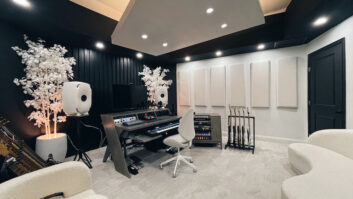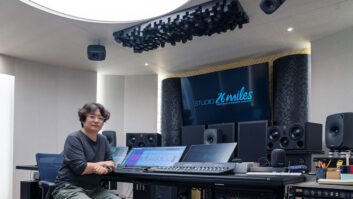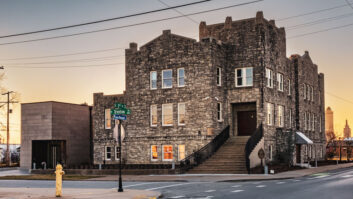Bloodlines run deep in the music business, as Queens native Chieli Minucci readily acknowledges. His father, Ulpio, was a composer (“Domani”) and arranger who worked regularly with the likes of Nat “King” Cole and Julius La Rosa. His own training began with piano and then, at the ripe old age of 8, guitar.
After graduating from Ithaca College in 1982, Minucci returned to New York City and began gigging with rock and R&B bands. His session resume now includes work with R&B heavyweights Chaka Khan and Mavis Staples, as well as current pop stars such as Celine Dion, Backstreet Boys and Jewel. When he met George Ginda, his partner in the still-going-strong band Special EFX, his interests turned toward contemporary jazz.
“My career has three components,” he says. “The recording work I do with Special EFX and under my own name [currently on the Shanachie label], the music I write and record for television shows such as the Guiding Light and [the recently canceled] Another World, and my touring work.”
All of Minucci’s television cues- including those written for Guiding Light, which won him an Emmy this year-are recorded in Baci Studio, his space in midtown Manhattan. “I was trained as a performer, writer and arranger first,” he says. “Operating my own project studio-and having to develop the associated engineering and computer chops-comes as a secondary issue for me. I actually have a modest studio, and I record all of my production music here, from start to finish.”
Digital tracks-horn overdubs, the occasional vocal line and his omnipresent guitar work-are laid down to a single Fostex RD-8; his sequencer is MOTU’s Digital Performer 2.2. “This manner of working has been fine with me, both for the work I do here and when I need to record guitar parts at my studio for some out-of-town project,” he explains. “However, it’s definitely time to move into the world of hard-disk recording. My friend Steve Skinner just loaned me his Korg 1212 card, and I’ll be experimenting with it.
“I’m seriously considering getting a MOTU 2408 card, but I’m currently using a Power Mac running at 225 MHz, and I know that won’t be fast enough to really take advantage of all that the Digital Performer/2408 combination offers,” he continues. “So my choice is either spend three grand on a new computer, or put that money into Pro Tools or another card-based processing system. I recently recorded some guitar parts and contributed a tune to Jay Beckenstein’s new album. He works up at Bear Tracks on an Ensoniq PARIS system, and that seems like a nice alternative to Pro Tools. I was really impressed with its sound. And yet, the integration of DP and the 2408 running on a 450MHz computer is also very attractive.”
Lots of project studio owners are moving over to digital consoles, but Minucci is sticking with his 8-bus analog Mackie. “It’s quiet and extremely useful in my setup,” he says. “The main point for me is that all of this technology has given us the opportunity to bypass the demo studio phase and make great-sounding records in our own spaces. Knowing what tools you need is really the pivotal issue, and to me it all comes back to the grounding in music that a player and arranger has to have.”
Minucci says that working as a player for great producers has helped immensely in his own work. “I recently was called by Mutt Lange to play guitars on a Backstreet Boys track over at Battery Studios on the tune ‘I Need You Tonight.’ The session went nine hours, and none of the time was wasted!”
How could a guitar session possibly take more time than it takes to play three big league baseball games? “Well, I had to play at least 15 electric guitar parts, plus some acoustic tracks. Jeff’s a master. He had his own idea for a three-part guitar sound on the verse, which we worked on until it sounded the way he wanted it. Then we’d move on to the chorus, bridge and so on. When those tracks were complete, he let me have a go at interlocking three guitar parts throughout the tune. Then, we went back to the beginning and analyzed what we had before, constructing a map of what ideas we wanted to keep from all of the recorded tracks. Then I went back and played three more parts, the result of our editing work! It was great!”







